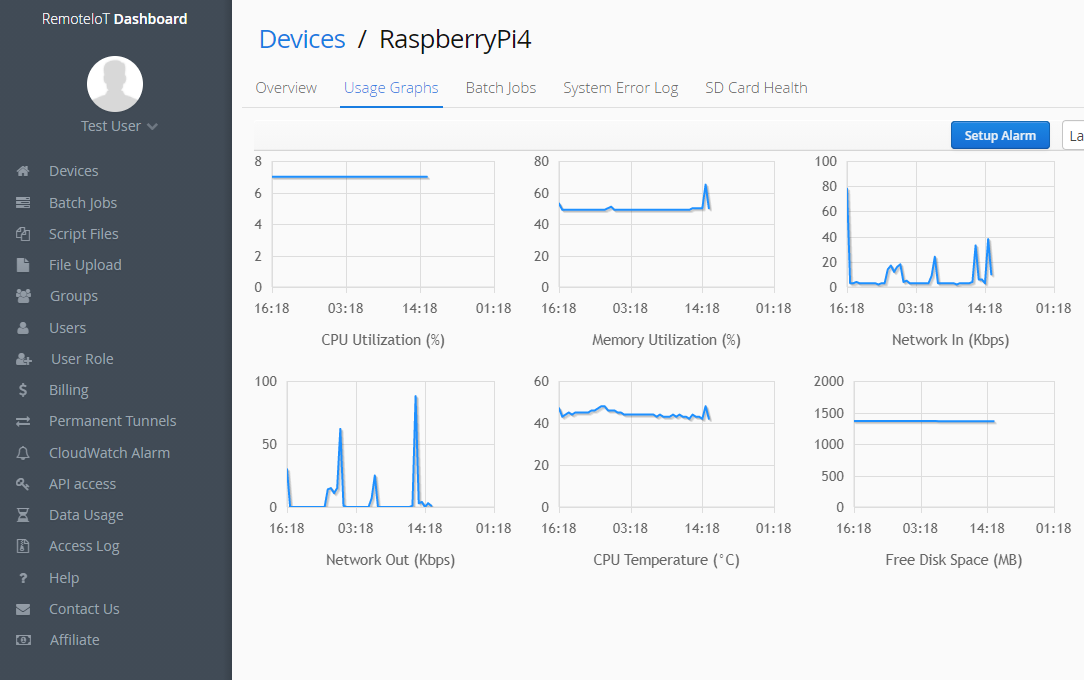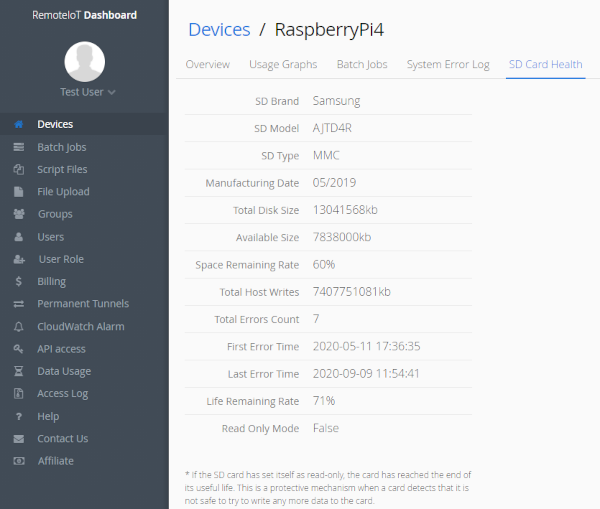
Connecting personal compact device externally proves to be incredibly handy, yet doing so besides introduces latent preservation issues. To lower present concerns, enforcing reliable guardrails and recognizing how Network Address Translation (NAT) runs is critical. A firewall acts as a buffer between one's Pi and the outside world, facilitating you to regulate incoming and outgoing traffic based on specified rules. By customizing your firewall to only authorize trusted connections, you can significantly boost the security of your device.
address mapping devices are another crucial element in remote access security. They map private IP addresses to devices within your network and present a single public IP address to the outside world. This method helps to hide the internal network structure, making it more difficult for attackers to attack individual devices. By applying both firewalls and NAT routers, you can create a secure and robust remote access solution for your Raspberry Pi.
Interacting with IoT Devices from Remote Places the Firewall
The sphere of Internet of Things (IoT) offers remarkable opportunities for operation, but it also offers unique hurdles. One key problem is securely accessing these devices from unfamiliar locations. Traditional firewalls, designed to protect platforms from external threats, often impede access to IoT endpoints, limiting the full potential of connected inventions. To handle this problem, innovative measures are emerging.
- Hosted platforms allow for protected access to IoT devices, enabling users to manage them from anywhere with an internet channel.
- Protected Link tools create a secure tunnel between the user's device and the IoT network, safeguarding data during propagation.
- Enhanced Verification protocols enforce strict access controls, validating the identity of users before granting them access to specific devices.
By embracing these solutions, organizations can leverage the full benefits of IoT while ensuring the protection of their valuable data and resources.
Bridging the Gap: Remotely to Raspberry Pis Behind Network Address Translation (NAT)
Network Address Translation (NAT) can sometimes pose a hurdle when trying to link to your Raspberry Pi from outside your local network. While NAT effectively masks private IP addresses, it can make direct connections troublesome. Fortunately, there are several solutions to bridge this gap and enable seamless remote access to your Raspberry Pis.
- One common approach is to utilize a Dynamic DNS service, which provides a unchanging hostname for your Pi that updates automatically even when its IP address changes.
- Another option is to set up port forwarding on your router, allowing specific ports on your Raspberry Pi to be routed to public IP addresses. This method requires careful configuration and understanding of network protocols.
- For more secure access, consider implementing a VPN (Virtual Private Network). A VPN encrypts your connection and routes it through a authorized server, masking your real IP address and providing an extra layer of protection.
By exploring these strategies and selecting the most appropriate solution for your needs, you can effectively bridge the gap created by NAT and gain reliable remote access to your Raspberry Pis, unlocking their full potential from anywhere with an internet connection.
Opening Remote Paths: IoT Device Access Within Firewalls
Remote access involving IoT devices frequently be a challenge when addressing firewalls. These security measures created to protect your network can sometimes limit your ability to control your electronic devices from afar. However, learning the principles behind firewall operation and implementing targeted configurations can grant a secure pathway for remote management.
One typical approach is to assemble port forwarding rules. This requires routing specific IP addresses and ports to your IoT device, effectively creating a direct connection. Another method uses VPNs (Virtual Private Networks). By deploying a secure tunnel between your device and the network where your IoT device resides, you can bypass firewall restrictions and gain access to your devices remotely. It's necessary to remember that implementing these solutions depends on a thorough understanding of your network infrastructure and security protocols to guarantee the integrity and safety of your system.
- Use strong passwords for your router and IoT devices.
- Repeatedly update firmware on your router and IoT devices to address security vulnerabilities.
- Switch off any unnecessary services or ports on your router.
Handling Firewalls for Remote Raspberry Pi Management
Remotely accessing your Raspberry Pi might be a powerful way to leverage its capabilities. However, firewalls are crucial for affirming the security of your device. Properly setting up firewall rules grants you to manage incoming and outgoing network traffic, curtailing unauthorized connections. Understanding how to manage these settings is necessary for guaranteeing the integrity of your Raspberry Pi.
- Employ a firewall software solution designed for Raspberry Pi. Numerous alternatives are available, each with its own set of characteristics.
- Develop clear rules that detail which ports should be open and which should remain closed.
- Evaluate the use of a VPN for an extra layer of encryption when linking remotely.
Be aware that firewall setups ought to be fine-tuned to your specific requirements.
Securing Your IoT Network: Remote Access Best Practices Behind NAT
Effectively operating your Internet of Things (IoT) devices from a remote location presents unique hurdles. NAT (Network Address Translation), commonly used in home and small office networks, can complicate this process. This guide will delve into the essential steps to securely access and set up your IoT devices behind a NAT firewall.
- At the start, establish a secure connection between your remote device and your local network using a reliable VPN protocol like OpenVPN or WireGuard.
- Subsequently, configure port forwarding rules on your router to allow incoming network calls to the specific ports used by your IoT devices. Ensure you only forward traffic to the required ports and use strong passwords for authentication.
- As a final step, consider implementing multi-factor authentication (MFA) for added security when accessing your IoT devices remotely. MFA adds an extra layer of protection by requiring multiple forms of verification, such as a password and a unique code sent to your phone.
By embracing these best practices, you can safely and securely handle your IoT devices from anywhere with an internet connection.
Defending Remote Access to Your Raspberry Pi
Desiring remote control over your Raspberry Pi? A firewall is essential for safely enabling remote access. It acts as a gatekeeper, blocking unauthorized communications while allowing accepted requests through. By implementing proper firewall configurations, you can ensure your Pi remains secure even when accessed remotely.
Begin by identifying the services you need to expose externally. HTTP servers are common examples. Configure your firewall to grant inbound packets on the specific ports used by these services. Remember, a well-configured firewall will only open the necessary doors, decreasing potential vulnerabilities.
- Apply a robust firewall software package designed for Raspberry Pi, such as UFW or iptables.
- Set up strong passwords for your remote access accounts.
- Periodically review and update your firewall rules to address any changes in your network.
Obtain Remotely to Raspberry Pis Through Firewalls and NAT Routers
Securing your Raspberry Pi within a network environment often involves traversing firewalls and Network Address Translation (NAT) routers. This can seem daunting upon first glance, but understanding these components is crucial for safely connecting to your device from afar. This guide provides an in-depth walkthrough of common tactics for remote access, empowering you to operate with your Raspberry Pi effectively regardless of its physical location.
We'll delve into the fundamentals of firewalls and NAT, outlining their roles in network security. Then, we'll explore various methods for establishing secure connections, including SSH tunneling, VPNs, and port forwarding. Furthermore, we'll provide practical steps and examples to help you implement these techniques on your own setup.
By mastering the art of remote access, you can unlock a world of possibilities for your Raspberry Pi projects, enabling you to monitor performance, address issues, and even control your devices remotely.
Trustworthy Remote Access for Your Raspberry Pi
Seeking ways to reach your Raspberry Pi externally? Follow these procedures to set up secure remote access. First, choose a suitable protocol like SSH or VNC. Next, initiate the necessary software on your Pi. Develop a strong password and enable two-factor authentication for added security. Then, route the required ports on your router to your Pi's IP address. Finally, test your connection from a remote device.
- security issues. To lessen safety issues. To lessen safety issues. To lessen security difficulties. To minimize
- Deploy firewalls to protect your Raspberry Pi. safeguarding threats. To lower defense challenges. Remotely Access IoT devices Behind Firewall or NAT router To diminish safety difficulties. To minimize preservation dangers. To alleviate
- Upgrade your software up-to-date to patch vulnerabilities.
- Monitor your system logs for suspicious activity.
From Home Network to the World: Remotely Controlling Your Raspberry Pi Across Firewalls
Your embedded computer can be much more than just a local project. With the right setup, you can control it from anywhere in the world, regardless of firewalls or distance. This opens up a universe of possibilities - managing your home automation, accessing data remotely, or even running online services directly from your Pi.
While this may seem daunting at first, setting up remote access for your Raspberry Pi is surprisingly straightforward. You'll need to configure your network settings, set up a secure connection, and choose the right tools for controlling your device remotely. Here are some major factors to get you started:
* First, ensure your home network is configured properly. This includes setting up port forwarding rules to allow access to your Pi from outside your local network.* Next, choose a secure connection protocol like SSH or VPN. These protocols encrypt your communications and protect your data from intrusion.* Finally, select a remote control tool that suits your needs. Popular options include VNC for graphical access, SSH clients for text-based interaction, and cloud-based platforms for simplified management.
Once you've taken these steps, you can enjoy the freedom of controlling your Raspberry Pi from anywhere with an internet connection. This opens up a world of possibilities for learning, experimenting, and building cutting-edge projects.
Interfacing IoT Devices Beyond the Local Network: Firewalls and NAT
Extending the reach of Internet of Things (IoT) devices away from the confines of your local network requires careful consideration of security mechanisms. Firewalls serve as crucial defenses, meticulously scrutinizing incoming and outgoing traffic to curb potential threats. Network Address Translation (NAT), on the other hand, allows multiple devices on a private network to share a single public IP address, enhancing network efficiency and hiding internal endpoints.
By implementing robust firewall configurations and employing NAT effectively, you can create a secure and organized environment for your IoT ecosystem to thrive. This combination of platforms ensures that your devices can securely interact with the wider internet while being protected from malicious actors.
- Arrange comprehensive firewall rules to permit only trusted traffic.
- Make use of NAT to protect internal device addresses.
- Track network activity for any suspicious behavior.
